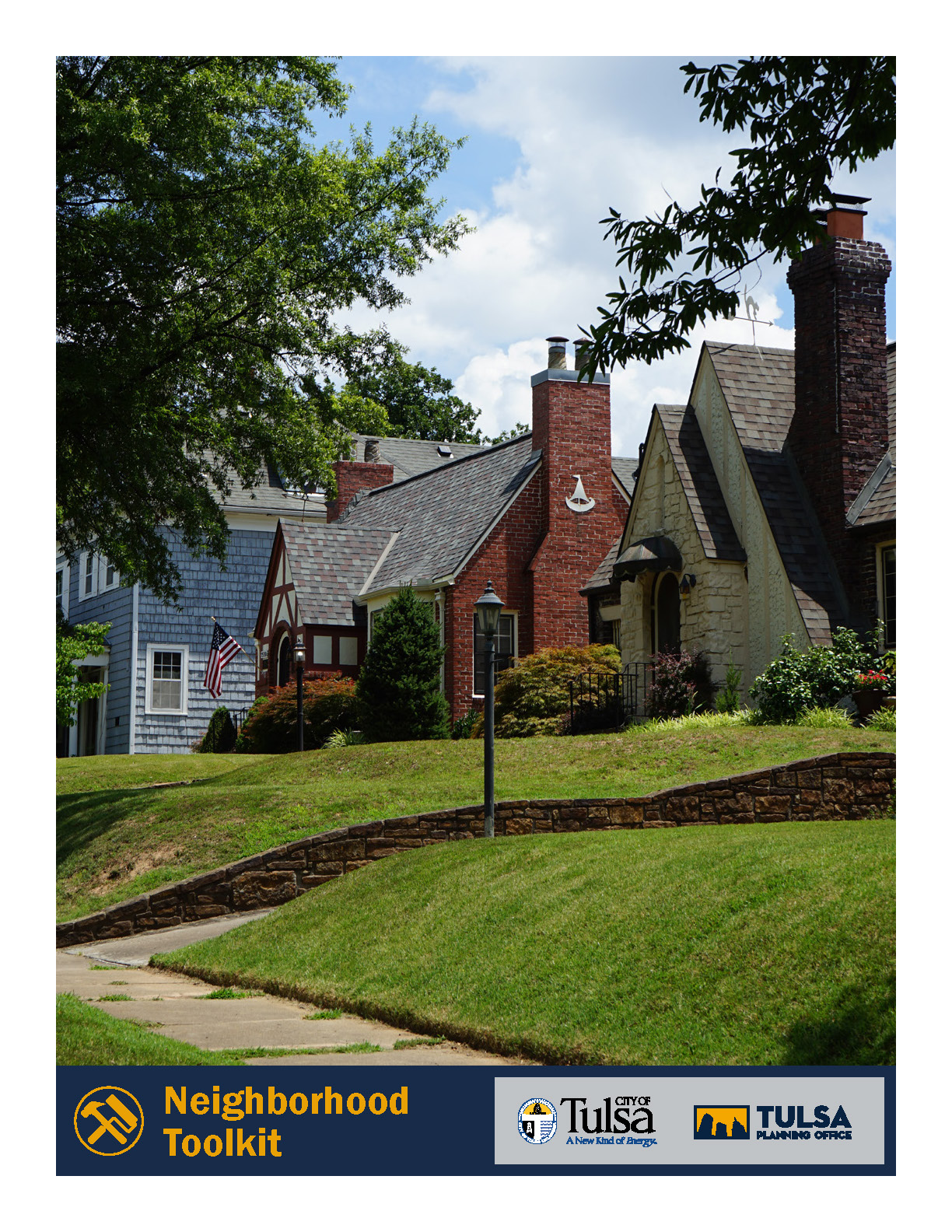Plant a Rain Garden
Toolkit Contents
Projects
- Start a Neighborhood Association
- Develop a Neighborhood Identity Sign
- Throw a Block Party
- Organize a Neighborhood Cleanup
- Report Code Violations
- Establish a Neighborhood Tool Library
- Start an Alert Neighbors Program
- Prepare for an Emergency
- Install a Storm Shelter
- Plant and Care for Trees
- Install Rain Barrels
- Plant a Rain Garden
- Request Mixed-Use Zoning Along BRT Route
Description
Rain gardens not only add beauty to your yard, but they also provide significant value by reducing rainwater runoff, alleviating flooding, and improving water quality. In fact, rain gardens can absorb 30% more rainwater than a regular lawn, and are more cost-effective than traditional systems of pipes and drains to treat the same amount of stormwater. Plus, they help improve the health of our streams and rivers by filtering the stormwater.
Unlike conventional gardens that typically sit even with or slightly higher than ground level, rain gardens are situated lower than their surrounding areas and serve as a basin for capturing, holding and filtering rainwater from patios, sidewalks, driveways, roofs, and surrounding lawns.
The size and shape of a rain garden can be tailored to fit with the rest of your landscaping. These gardens can also serve as habitats for birds, butterflies, and other wildlife. While there will be some pooling of water during or after heavy rains, they typically look just like another part of landscaping.
Steps
-
Determine the best location for your rain garden.
This should be a low area of your yard where water flows naturally. Avoid areas with underground utilities or under existing trees, place it at least 10 feet away from any buildings, and make sure your soil can absorb enough water (see right). Call Okie811 or 1-800-522-6543, or visit okie811.org to locate underground utilities before digging. -
Calculate the size of the rain garden to meet your runoff needs.
Consider all the hard surfaces like roofs, patios, sidewalks, and driveways that will send water to the garden. Add up the square footage of these areas and multiply by 5-10%. For example, the roof on a 1,200 sq ft house multiplied by 0.05 = 60 square feet, or an area 6 feet by 10 feet. If only half of the roof will lead water to your rain garden, take that into account. -
Mark the outlines of the rain garden.
These can take any shape you want. Dig out the depression for the garden, usually 6-8” deep. -
Select your plants.
There are many plants and flowers that work in a rain garden (see link at right). Pick ones that complement your landscape style and color palette. Plant the most drought tolerant plants near the edge of your rain garden, and the most water hardy plants in the bottom of the basin. -
Water and maintain the garden.
You will likely need to weed and water the garden as it gets established. Once the plants are off and growing, you may only need to water in cases of extreme drought. Keep a good layer of mulch in place, and your rain garden should be a very low maintenance portion of your landscaping. You can also attach rain barrels to your home’s gutters to reduce runoff, and use the collected rainwater to water your garden and lawn.
Resources
Okie811
Call 8-1-1 or 1-800-522-6543, or visit okie811.org before digging the basin of your garden. They will come to your house and mark the location of any underground utilities so you know where you can dig safely.
Soil Testing
One important rule for picking a site for a rain garden is there must be a positive soil infiltration rate. A slow rate means the soil will not have the ability to absorb water and will result in water standing in the rain garden for long periods.
Calculate your Infiltration Rate
- Clear out a small area where the future rain garden will be located.
- Dig an 8-inch deep hole. Fill the hole with water and let it completely percolate into the soil. This pre-wets the soil in the hole area.
- Fill the hole with water again. Measure how much time it takes the water to completely drain into the soil.
- Calculation: the infiltration rate = 8 inches divided by the number of hours it took the water to drain.
Rain gardens need a rate of at least 0.5 inches per hour. If the soil drains slower than that, look for another location or amend the soil.
The Tulsa County OSU Extension Office can also troubleshoot and analyze your soil. Call 918-746-3701 or visit tulsamastergardeners.org/diagnostic-center.html.
Plant Selection & More Information
OSU Rain Garden Fact Sheet
extension.okstate.edu/fact-sheets/sustainable-landscapes-designing-a-rain-garden-for-residential-property.html
Local Examples of Rain Gardens
cityoftulsa.org/lid
